How to get an emergency radio station on air within 72 hours of a crisis
- 17/12/2020


Radio is resilient. Despite the advances in digital technologies, radio remains one of the most reliable channels of communication during and after an emergency. The CDAC Network has long been a champion of this technology, and works closely with a number of partners to help ensure the effective distribution of radio technology, equipment and best practice during a humanitarian response.
And, as Mike Adams, the international coordinator at First Response Radio (FRR), explains: setting up an emergency radio station in a crisis need not be expensive, nor slow. In fact, they can do this in under 72-hours. Here’s how:
Typhoon Goni/Rolly, was an extremely powerful storm that made landfall as a super typhoon on 1 November 2020. When the FRR Philippines team, operated by Far East Broadcasting Company (FEBC) Philippines, got on the air in under 72 hours - they made it look SO easy.
Over 15 years ago when FRR first made it our goal to have a radio station on the air in 72 hours following a disaster, we realised it was an almost impossible goal – the bar was set very high. Many times, teams do not hit this target, but it helps to "Aim high"! It has taken the FRR network 15 years to get to the point where this team was on the air in under 72 hours and I do not want us to miss what a great achievement this was, and how it was done.
- PREPARE: FRR always launches teams in "disaster-prone" countries and the Philippines is one of the most disaster-prone counties in the world. Dan Cura, President of FEBC Philippines, invited the FRR team to test and launch our efforts there in the Philippines in 2007.
- EQUIP: The first step was to provide suitcase radio equipment to the FRR PH team. Now they have multiple suitcase radio kits. One of these kits was pre-positioned at the FEBC station in Legaspi in this most disaster-prone province where the storms often come ashore. This kit was pre-positioned there at the start of this typhoon season.
- TRAIN: FRR trains teams to use this equipment in a 5-day training course and a 3-day field exercise. FEBC PH hosted the very first training event in 2007 in Legaspi, Philippines. Ten years later they ran their 4th training event, again on the east coast, and some who were trained at these events were on the ground when Typhoon Goni/Rolly hit. Indeed, given the groundwork that was put into this programme, it was no accident that a well-trained team was available and on-hand.
- RESPOND: FRR PH always coordinates and communicates with the government and humanitarian organisations in disaster response. After 15 years, brands of FRR and the CDAC Network have built trust and open doors. The Philippines Coast Guard offered a ride to the FRR team.
Well done to the FEBC Philippines team, who managed to get an emergency radio station on the air in record time: in 72 hours of the onset of the crisis. The lesson: preparation pays off – responding quickly often takes years of hard work in refining response systems.
For more information about this project, and all the work of First Response Radio, contact Mike Adams: mike@firstresponseradio.org




















